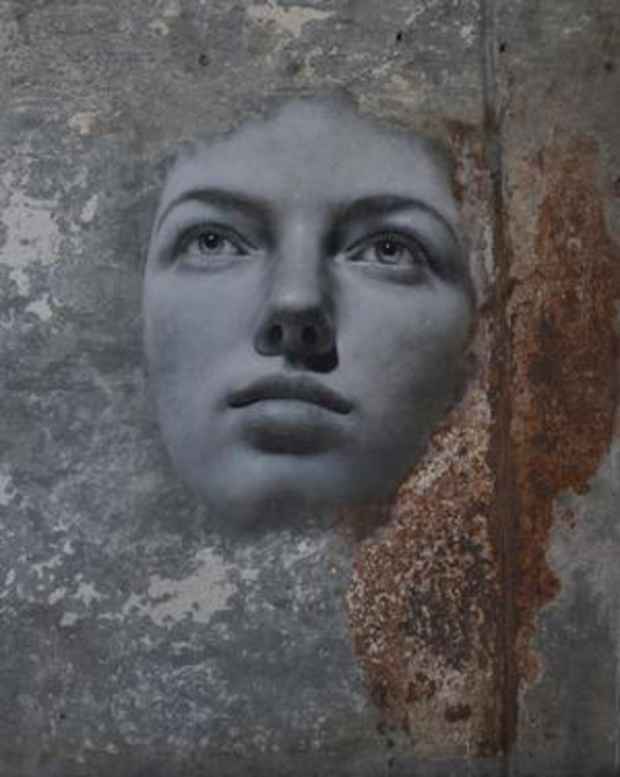“The Age of Innocence” Exhibition
Kips Gallery

This event has ended.
This double show presents, for the first time in New York, the latest work of two Italian artists who are similar and distant from each other. Linked by a direct and dry approach to painting, their works produce essential images, marked by a brutal and refined relationship between the subject and the rough background offered by the substrate.
Usually, during the approach to the design, the child tends to describe the essentials, leaving out details. His world, still in training, is more fluid and less constrained to the laws that govern the visual world of adulthood. People can fly (Chagall), the bodies may deform to become geometric abstractions (Klee) or biomorphic devices with great expressiveness (Picasso); faces can turn into masks (Modigliani) or end up stretched over the human limits (Giacometti), the landscapes can become splashes of color (Kandinsky) and the figures can lose their precise contours (Bacon). This sort of innocence of the vision marks the new frontier of modern art. Whether it is the innocence of the child or the primitive, what matters is that it is a state of “knowledge” that dates back to before the advent of painting technique as it has been handed down from the Renaissance onwards.
There is a famous phrase of Picasso: “When I was four I painted like Raphael, then it took me a lifetime to learn to paint like a child.” (cited in “Corrieredella Sera”, 9 October 2009) . Finding the lost innocence is one of the fundamental themes of modernity in painting. The taste for simplicity and for the visceral emotions has been a distinctive feature that still appears in many contemporary paintings without this having a more striking effect on us. This innocence has a face, the human one, which appears in this exhibition on the two Italian painters.
Max Gasparini
It seems difficult to sustain that the paintings of Max Gasparini are innocent. In fact, his kind of painting appears wise, able to look to the realism and classicism with equal intensity. His use of black and white looks like a further refinement, capable of giving to the subjects a deep consciousness and frozen in time.
Nevertheless, it is precisely these subjects that indicate a state of innocence that the painter seems to want to recover as a lost element. Faces of women dreamy, petrified objects, sleeping bodies. They are the image of a “pure” beauty, which attempts to go beyond the carnality of color and stare itself into our eyes as an idea. These images emerge from the shade of abstract rough supports, such as rusted metal, the raw canvas and paper left untreated. In this dialogue between the figure in the foreground and the hostile background, the ingenuity of painting tries to fix what is essential, ferrying the female human face into the purity of an idealized vision. The relationship between the background and the subject is what makes the Gasparini’s proposal original and innocent, by drawing on the raw material of the substrate and leading to light a work of art technically well done, but also immediate, impressive, and seductive.
Lucia Riccelli
In a letter dated 2005, addressed to the undersigned, Lucia Riccelli said: “So many thoughts are making room in my brain, scratching and stroking… many reflections on my way to paint and why… on devastating influence that has all of this in my life… on this expensive, unnecessary if you want, yet so vital experience that gives me a reason to live, a reason to love myself and to hate myself at the same time.” Let us leave aside here, the fact that the task of revealing what’s behind the painting ports the critic to make public words written by the artist in intimacy. What I care about is the psychological approach from which arises the work of Lucia Riccelli. Her apprehension is a declaration of unconditional love, from where arise these recent “distorted” women, instantaneously sketched in an abstract dimension and material, which is of the rough canvas. In a process of rarefaction of painting, Riccelli gets to sketch faces, bodies, poses and expressions with minimal use of the brush and color, with an economy of means and of “words” that make her images more powerful and engaging. Dancer and musician from an early age, Riccelli faces the painting as if it were a fight, a melee, an entrancing dance, exhausting, and ecstatic.
Max Gaspariniwas born in Rovato (Brescia), Italy, in 1970. He currently lives and works in the countryside close to Bergamo (Italy). His work has been showed in Europe and is represented by Italian and European galleries. Starting from a classical and realistic painting of objects, landscape, and portraits made through a minute technique, he then came to realize the act almost by chance, using colors and materials coming from his job: acrylic varnish, lacquer, shellac, alcohol. It was an epiphany. The paintings started to take shape by themselves, without will or plans, removing the process of ideation, project, and sketch. The work rises by itself, taking a shape not entirely under control. The use of inexpensive materials such as packing cartons, packaging, and unprepared canvas give the painter the battlefield in which colors will have different reactions. A painting of outburst, letting it be. The materials meet in new vibration every time. The gesture, the chemistry, and the physics decide the form.
Media
Schedule
from September 26, 2013 to October 14, 2013
Opening Reception on 2013-09-26 from 18:00 to 20:00